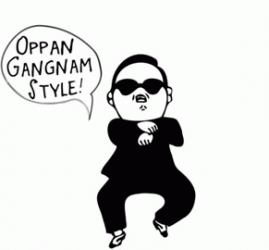Literary Analysis- Joel Yap
Shortly after release, “Psy”’s Gangnam Style took the world by storm, subsequently breaking the YouTube record number of views for a single video at the time. Although the popular music video was able to resonate with audiences worldwide, it retains certain elements that distinguish it as distinctly Korean. As written in Hee-Eun Lee’s Koreanness in K-pop, such distinct elements can be traced back through the history of K-pop, and how globalization and modernization continue to impact the development of Korean music.
In Lee’s writing, the importance of the presentation of music through music videos is emphasized. Traditionally, cultural context has played an important role in the reception of music, however, with music videos there is a “disengagement from contexts” (24)1. Essentially, music videos present much more than just an audio track with lyrics to an audience, which provides the artist with a multitude of ways by which they can express themselves.
Lee writes that the “performance appears visually global, while their Korean lyrics and vocal effects are acoustically local” (11-12)2. In the Gangnam Style video, the most obvious feature is “Psy’s” now instantly recognizable dance move. Despite a global audience most likely not being able to understand the majority of the (limited) lyrics, other elements within the video work to retain their interest.
As a result, although the song is mostly in Korean and centered around a single area in Seoul, it was still able to garner a large international audience. It closely follows Lee’s writing that k-pop cultivates “mediation of global and local”(29-30)3.
- Lee Hee-Eun, “Seeking the “others” within us: Discourses of Korean-ness in Korean popular music” in Medi@sia:Global media/tion in and out of context (London, Routeledge, 2006)
- , 138
- , 139

